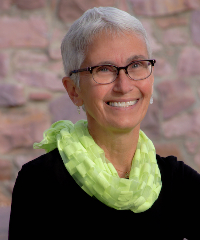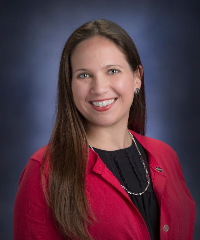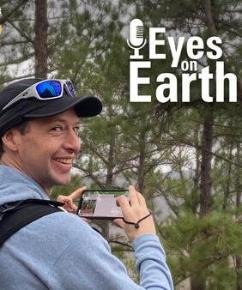Community Blogs
Community Blogs
Discover how the GLOBE community is engaging in all things GLOBE through the community blog posts below.
Learn how to create a GLOBE community blog post.
Filter By:
Blogs List
The Problem
You've got a list of AOI coordinates. Google Maps will show them to
you, but it won't tell you the best order to visit them. If you’ve got
more than a few points, this becomes a mess—guesswork, wasted time,
and unnecessary backtracking.
We need a tool that will plan the most efficient route for us instead
of figuring things out ourselves. That’s what this does, here’s how:
The Solution
This problem is a textbook example of the classic Traveling
Salesman Problem (TSP): How can we find the shortest route
that visits each location (in our ...
Read More »
Posted in:
Curriculum:
TECHNOLOGY
STEM
GLOBE Science Topics:
EARTH AS A SYSTEM
Investigation Areas:
EARTH AS A SYSTEM
Our project for SEES 2024 was "Creating a Model to Identify
High-Risk Areas for Flash Flooding in Houston, Texas." In this
blog, I will discuss how we calculated which areas are "high-risk."
There are many ways to identify the most at-risk points of flooding
in a given region. Such points are commonly identified in a flood map,
such as the one here:
For our project, we decided to look at elevation data, which is
perhaps the most intuitive: water flows downhill and will accumulate
in the lowest regions. To get our elevation data, we used ...
Posted in:
GLOBE Science Topics:
CLIMATE CHANGE
EARTH AS A SYSTEM
EARTH SYSTEM SCIENCE
Investigation Areas:
EARTH AS A SYSTEM
BIOSPHERE
LAND COVER CLASSIFICATION
Primary Audience:
SCIENTISTS
STUDENTS
TEACHERS
Student Research Reports:
MISSION MOSQUITO REPORT
SEES 2024 Experience
Getting the opportunity to participate in the NASA SEES Earth System
Explorers program has positively impacted my educational and career
journey in more ways than I could've imagined. Throughout this
internship, I gained an immense amount of knowledge in Earth science,
utilizing the GLOBE Observer app, ArcGIS, Collect Earth Online,
Python, and many other tools to better understand the environment
around us. During the last few weeks of the program, a team of seven
other interns and I completed our own research project called
"Harnessing ...
Posted in:
GLOBE Science Topics:
EARTH AS A SYSTEM
Investigation Areas:
EARTH AS A SYSTEM
LAND COVER CLASSIFICATION
MOSQUITOES
Primary Audience:
SCIENTISTS
STUDENTS
TEACHERS
Student Research Reports:
MISSION MOSQUITO REPORT
In this blog post, I will go through every step of the internship and
outline my experience!
Before I do that, first of all, I would like to say that I am so
happy that I got to spend my summer with SEES! This program was so
amazing and helped guide me a bit more on what I want to do in my
future career and in college! I am very grateful for all of our
mentors who guided us through the program and provided great knowledge
and support to all of us! Thank you for this opportunity.
Modules: Climate Science Background and Exploring the Earth
To prepare for the ...
Posted in:
GLOBE Science Topics:
EARTH AS A SYSTEM
Investigation Areas:
EARTH AS A SYSTEM
LAND COVER CLASSIFICATION
MOSQUITOES
Student Research Reports:
MISSION MOSQUITO REPORT
If you had asked me what “citizen science” was before this internship
with the NASA SEES ( STEM Enhancement in Earth Science ) Earth System
Explorers, I most likely would have conjured a description that
involved studying the human body. Now, however, I feel confident in
saying that citizen science is a dynamic, extraordinary meaningful
process by which everyday citizens contribute to real-world scientific
research. This internship allowed me to take on the roles of both a
citizen scientist and a researcher, deeply engaging with my local
community and environment while ...
Posted in:
GLOBE Science Topics:
DATA INCLUDED
EARTH AS A SYSTEM
Investigation Areas:
EARTH AS A SYSTEM
Primary Audience:
PARTNERS
SCIENTISTS
STUDENTS
TEACHERS
Student Research Reports:
MISSION MOSQUITO REPORT
The wildfire data analysis journey began with a dataset comprising
over 1200 points located in the California region. To uncover the
correlation between land cover types and wildfire risk, we first
needed to determine the wildfire risk for each point using the FEMA
Wildfire Risk Map. This step involved entering coordinates into the
software to obtain the wildfire risk index for each location. From
this dataset, we categorized approximately 325 points as having a very
low risk, 350 as moderate risk, and 578 as very high risk for
wildfires. These categories served as the ...
Posted in:
GLOBE Science Topics:
EARTH AS A SYSTEM
Investigation Areas:
EARTH AS A SYSTEM
LAND COVER CLASSIFICATION
Primary Audience:
SCIENTISTS
STUDENTS
TEACHERS
Student Research Reports:
MISSION MOSQUITO REPORT
My group’s project focused on using land cover data and GLOBE
Observer images to create a machine learning model that can predict
land surface temperature - a measure of how hot the surface of the
Earth feels in a given location. For context, GLOBE is short for
“Global Learning and Observations to Benefit the Environment”. It’s an
app that lets volunteers across the world take observations of their
local community (these could be of cloud cover, land cover, or
mosquito habitats) and these observations help scientists track
changes in the environment. It’s part of a wider ...
Posted in:
GLOBE Science Topics:
EARTH AS A SYSTEM
Investigation Areas:
HYDROSPHERE
EARTH AS A SYSTEM
MOSQUITOES
Learning Activities:
EARTH AS A SYSTEM
LAND COVER/BIOLOGY
Primary Audience:
PARTNERS
STUDENTS
TEACHERS
Student Research Reports:
MISSION MOSQUITO REPORT
Roboflow is an open-source dataset management platform, where users
can import data, label it, and then have a model train on it. For my
group's project, CS-FLARE, we used Roboflow to label brush, grass,
trees, and leaf litter in our NESW Images as shown below.
When I initially began labeling images, I tried
using bounding boxes for each picture like the leaf litter in the
image above. This became a bit annoying as sometimes the bounding
boxes would cut parts of objects like trees, but it was still faster
than using the polygon tool to manually trace around objects. ...
Posted in:
Investigation Areas:
EARTH AS A SYSTEM
LAND COVER CLASSIFICATION
MOSQUITOES
Primary Audience:
STUDENTS
TEACHERS
Student Research Reports:
MISSION MOSQUITO REPORT
The GLOBE Clouds team is delighted to announce this new section that showcases sky and cloud photographs from around the world! We’ve also been receiving some amazing questions from students.
The featured question was asked by students from Corpus Christi Catholic School :
Question: Why can we see clouds but not evaporation?
Answer: Water vapor is invisible. However, the water in clouds is in liquid or solid state, not gas.
Do you have a favorite cloud photo or a question for the team? Use the linked form to cast your vote and ask us any question ...
Posted in:
Curriculum:
STEM
GLOBE Science Topics:
BACKYARD SCIENCE
CLIMATE
CLIMATE CHANGE
GENERAL SCIENCE
GENERAL SCIENCE @ES
EARTH AS A SYSTEM
EARTH SYSTEM SCIENCE
Investigation Areas:
ATMOSPHERE
EARTH AS A SYSTEM
News Topics:
NEWS BRIEFS
Primary Audience:
ALUMNI
COUNTRY COORDINATORS
PARTNERS
SCIENTISTS
STUDENTS
TEACHERS
TRAINERS
Waleska works with in-service teachers in the teacher training programs of the Galileo University and the University of San Carlos of Guatemala. She is the founder and coordinator of the STEAM program
Question: Where are you from?
Answer: I was born in the city of the eternal Spring, Guatemala City, in Central America, several eclipses, comets, and moons ago.
Question: What inspired you to work in this field?
Answer: Since I was little I had a fascination with natural phenomena, the reason why stars shine led me to be a Physicist, and fireflies and ...
Posted in:
Curriculum:
STEM
GLOBE Science Topics:
BACKYARD SCIENCE
CLIMATE
CLIMATE CHANGE
DATA INCLUDED
GENERAL SCIENCE
GENERAL SCIENCE @ES
SCIENTIST SKILLS
Investigation Areas:
ATMOSPHERE
EARTH AS A SYSTEM
Primary Audience:
ALUMNI
COUNTRY COORDINATORS
PARTNERS
SCIENTISTS
STUDENTS
TEACHERS
TRAINERS
Brad Hegyi is a research scientist for the NASA Prediction of Worldwide Energy Resources (POWER) project team at Langley Research Center in Hampton, Virginia, USA. Brad develops metrics and statistics for POWER from model estimates of future climate to help support planning for future energy use by heating and cooling systems in buildings. Brad also helps create interactive data products to better visualize changes occurring in the climate data.
The energy that comes from the Sun is the basic source of energy for everything on Earth. Solar energy drives Earth’s weather and ...
Posted in:
Curriculum:
TECHNOLOGY
STEM
GLOBE Science Topics:
BACKYARD SCIENCE
CLIMATE
CLIMATE CHANGE
DATA INCLUDED
GENERAL SCIENCE
EARTH AS A SYSTEM
EARTH SYSTEM SCIENCE
SCIENTIST SKILLS
Investigation Areas:
ATMOSPHERE
EARTH AS A SYSTEM
Primary Audience:
ALUMNI
COUNTRY COORDINATORS
PARTNERS
SCIENTISTS
STUDENTS
TEACHERS
TRAINERS
The Sun drives many processes in Earth’s atmosphere. As the Sun rises and sets, it warms the Earth’s surface at different intensities. These changes in heat lead to changes in the clouds, especially the types of clouds. To study these changes, we need observations at different times over the course of hours, days, weeks, months, and years from around the globe. It can be tricky to capture the extent of these interactions with satellites alone, which is why we need observations from your perspective on the ground as part of the GLOBE Eclipse Challenge: Clouds and Our ...
Posted in:
Curriculum:
STEM
GLOBE Science Topics:
BACKYARD SCIENCE
CLIMATE
CLIMATE CHANGE
DATA INCLUDED
GENERAL SCIENCE
GLOBE PROTOCOLS
EARTH AS A SYSTEM
Investigation Areas:
ATMOSPHERE
EARTH AS A SYSTEM
Energy from the Sun warms our planet, and changes in sunlight can also cause changes in temperature, clouds, and wind. Clouds are ever changing and give you clues and information on what is happening in the atmosphere. Eclipses provide a natural experiment, in which the Sun’s light is blocked from Earth for a brief period in time, allowing us to observe the effects of that sudden change. Read the newly released blog post explaining in depth cloud formation and which ones would be impacted by the upcoming total solar eclipse over North America and how the data will be used. ...
Posted in:
Curriculum:
STEM
GLOBE Science Topics:
BACKYARD SCIENCE
CLIMATE
CLIMATE CHANGE
GLOBE PROTOCOLS
EARTH AS A SYSTEM
Investigation Areas:
ATMOSPHERE
CLOUDS
EARTH AS A SYSTEM
Primary Audience:
ALUMNI
COUNTRY COORDINATORS
PARTNERS
SCIENTISTS
STUDENTS
TEACHERS
TRAINERS
Results (continued)
Wood-chip temperatures
On 10 October, by myself this time, I had another surprise: how hot that wood chips, often used in landscaping are, with temperatures reaching 60-65°C at 13:00 MST, when the air temperature was 26.1°C. Seeing this, I decided to take several more measurements of wood-chip skin temperature. I chose to focus on the wood chips at the west end of the top of the mesa we live on, since on cloudless days they were exposed to full sun from noontime onwards.
Table 3a shows the environmental conditions for each observing session, ...
Introduction
The temperature of a surface – the grass, the sidewalk, or your skin – is called the “skin” temperature. Satellites monitor Earth’s skin temperature every day. Skin temperature is an important addition to several other variables – like soil type, plant cover, etc. – to estimate how the land surface is affecting the weather. Ocean skin temperature is also an important parameter in estimating near-surface air temperature over the oceans because there are few direct observations. Since the oceans cover such a large part of Earth, these temperatures are ...
For the past three years, the GLOBE Mission Earth (GME) Team at the University of Toledo, Ohio has been teaching and mentoring NASA-SEES high school students across the United States in the study of the Urban Heat Island Effect (UHIE) and Air Quality. In 2023, the NASA-SEES High School Virtual Internship Program had 20 interns for both the UHIE and Air Quality Groups.
During the 6-week virtual training, interns conducted research on the topics of their choice and met virtually three times a week to complete their projects. They also completed weekly assignments.
For the UHIE ...
Posted in:
Curriculum:
EDUCATION RESEARCH
STEM
GLOBE Working Groups:
EVALUATION WORKING GROUP
SCIENCE WORKING GROUP
EDUCATION WORKING GROUP
TECHNOLOGY WORKING GROUP
Investigation Areas:
ATMOSPHERE
HYDROSPHERE
EARTH AS A SYSTEM
PEDOSPHERE (SOIL)
BIOSPHERE
Primary Audience:
COUNTRY COORDINATORS
PARTNERS
SCIENTISTS
STUDENTS
TEACHERS
TRAINERS
Student Research Reports:
U.S. STUDENT RESEARCH SYMPOSIA (SRS)
MISSION EARTH REPORT
Adopt-a-Pixel | Where does water meet land in my community?
Scanning the Area
As our first assignment as part of the Earth System Explorers team, we've been tasked with making our first observations using the GLOBE Observer App. The goal was to make 12 total observations (6 Potential Mosquito Habitat & 6 Land Cover).
To be more efficient, I decided to make all of my observations at 6 different still bodies of water. This way I could do a MHM and a LC observation at each location.
Before I began, I scouted potential bodies of water on Global Surface Water ...
Posted in:
Investigation Areas:
EARTH AS A SYSTEM
LAND COVER CLASSIFICATION
MOSQUITOES
Primary Audience:
STUDENTS
TEACHERS
TRAINERS
I built my mosquito traps on June 20th and ran the experiment until July 15th. I collected a total of 15 observations during this period. To construct the traps I used three identical pots to hold water. The goal of my experiment was to find which type of mosquito bait would be the most effective at attracting and sheltering mosquitos. For the three baits I used dried leaves, grass clippings, and a wooden plank. I chose these three baits because they represent possible real life environments that mosquitos may breed in. The dried leaves simulates a pool of water that does not evaporate ...
Posted in:
Investigation Areas:
HYDROSPHERE
EARTH AS A SYSTEM
LAND COVER CLASSIFICATION
MOSQUITOES
Primary Audience:
STUDENTS
TEACHERS
TRAINERS
AOI Fieldwork
At first, collecting land cover data for 37 points within my area of interest felt like a daunting task. However, after only a few "expeditions" in the past week, I was able to complete all 37 observations.
To make my work easier and more accurate, I intentionally choose an AOI that would contain as many points as possible within a nearby park. This was to ensure that I could access as many points as possible. Despite my best efforts, many of the points still landed in residential properties. This activity actually reminded me how many neighborhoods there are in my ...
Posted in:
Investigation Areas:
HYDROSPHERE
EARTH AS A SYSTEM
LAND COVER CLASSIFICATION
MOSQUITOES
Primary Audience:
STUDENTS
TEACHERS
TRAINERS
Student Research Reports:
INTERNATIONAL VIRTUAL SCIENCE SYMPOSIUM REPORT
MISSION MOSQUITO REPORT
In this episode of Eyes on Earth, we talk with Peder Nelson about generational science and the responsibility we have to future generations to study our changing planet. It takes more than just data to make sense of land change. And while remote sensing scientists work with the deep archive of Landsat and other land data available from the USGS EROS Center, everyone can put themselves on the timeline of Landsat data. Citizen science projects allow anyone to participate in the observations that help us understand the world around us.
Details
Episode:
96 ...
Posted in:
GLOBE International STEM Network (GISN):
GLOBE INTERNATIONAL STEM NETWORK (GISN)
Investigation Areas:
EARTH AS A SYSTEM
BIOSPHERE
—
20 Items per Page










